A privilege of the water librarians in teaching water literacy(ies) and STEM to smaller children—ages pre-K to second grade— is greeting them at a developmental age when the acquisition of STEM literacy, reading literacy, and cultural literacy is not so parsed or separated. The boundaries between what later become distinct “disciplines” are fluid, and so a child can often develop reading and language skills concurrent with developing a basic understanding of the properties of the biological world and the tenets of the scientific method. When we add children’s literature and picture books into the mix of a STEM water science/environmental curriculum, we confer social and cultural literacies. The heavy use of symbolism in literature for children and the practice of anthropomorphism—writing animals with human characteristics—means that lessons about social and even political life emerge in the narrative.
This is on view when we consider teaching basic concepts about biodiversity and aquatic biodiversity. Biodiversity—the (crucial) existence of many different species of plants and animals in an environment, their genetic variety, and the multiple habitats in which these plants and animals live—and its sister for the water sciences, Aquatic Biodiversity, form a welcome “literacy match-up” with social and cultural lessons about the importance of embracing and celebrating all forms of human difference.
Here are ten children’s literature selections from the collections of the Wisconsin Water Library that exemplify this literacy match-up. Some of the stories achieve a dual lesson of biodiversity/cultural diversity by deploying the motif of a character who goes on a journey through a habitat, remarking—with vivid, celebratory description and imagery—on the variety of biological life en route. Others put forth a protagonist who feels different, or is a stranger in an unfamiliar landscape seeking to make connections with other animals or venture off and interrogate a sense of not belonging.
We hope you enjoy these books as much as we do, and let us know about some of your favorites by emailing us at askwater@aqua.wisc.edu.
| Goose by Molly Bang
https://search.library.wisc.edu/catalog/999794509602121 When a strong wind throws an egg far from its nest, a little baby goose finds herself born into a family of woodchucks. While well-loved, the strain of feeling different motivates the grown-up goose to set off on an intangible search for belonging. Written and illustrated by three-time Caldecott runner-up, Molly Bang, Goose is the 2016 winner of the Phoenix Award, which honors annually one English-language picture book published 20 years earlier that did not win a major literary award. |
 |
 |
Howard by James Stevenson
https://search.library.wisc.edu/catalog/999546460702121 Howard, a dawdling duck, finds himself late to meet his family to fly south for the winter. When he rushes off to find them, he becomes lost in a blizzard and finally surfaces on a rooftop in New York City. Alone in the Big Apple, Howard meets a new crew of urban animal dwellers with whom to tour the city each day, and find warm places to sleep at night. By acclaimed New Yorker cartoonist, James Stevenson, Howard paints a tender and silly portrait of animal life in the built landscape. |
| Swimmy by Leo Lionni
https://search.library.wisc.edu/catalog/999708724002121 Typically interpreted as a parable for the value of collective action to fight a bully, Leo Lionni’s gorgeously illustrated Swimmy—the story of a lone black fish in a school of red compatriots who escapes the jaws of a giant tuna—can also be read as a rich tour through the aquatic biodiversity of the sea, as the protagonist of the Caldecott winner swims past a descriptive array of stunning ocean life and aquatic plants. |
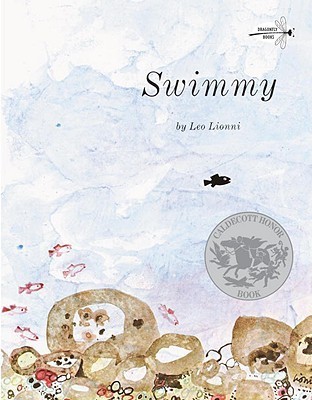 |
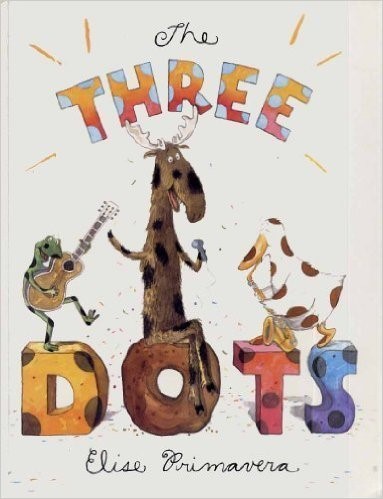 |
The Three Dots by Elise Primavera
https://search.library.wisc.edu/catalog/999965358302121 Henry, a frog from South Jersey, Sal, an Alaskan moose, and Margaret, a duck from the Midwest have two things thing in common—each of them were born with dots and all of them love music. Feeling different and out of place in their respective dot-less families, they find their way separately to New York City. Upon meeting, Henry, Sal, and Margaret become roommates and form a band as they work through the growing pains of being grown-up friends. As with many stories with characters who feel liminal or partly-outcast, Elise Primavera chooses New York as a setting and destination for her characters, an urban icon of a globally diverse city. |
| Hooray for Fish! By Lucy Cousins
https://search.library.wisc.edu/catalog/9910003227102121 Red, blue, yellow, stripy, spotty, happy, gripy, scary, harry!—these are just some of the kinds of fish we meet in Lucy Cousins’s Hooray for Fish!. With unrelenting celebration, Cousins’s bright, bold, and graphic illustrations move the reader through a veritable crowd of fish of all shapes, sizes, characteristics, and dispositions. |
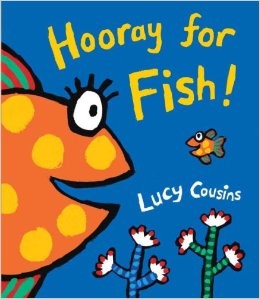 |
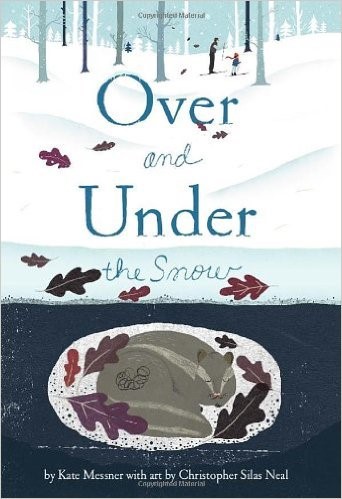 |
Over and Under the Snow by Kate Messner art by Christopher Silas Neal
https://search.library.wisc.edu/catalog/9910106426102121 When a little girl goes cross country skiing with her father, they delight in the hints and traces of animal life above the snow that provide clues to what lies underneath. In collaboration with illustrator Christopher Silas Neal, Kate Messner offers a portrait of winter not simply as a bleak, snow-covered landscape, but as an eclectic underworld of tiny shrews, dozing black bears, drowsy bumble bees, snoozing bullfrogs, snowshoe hares and much more. Messner and Neal even provide an illustrated glossary at the end of the book to further teach readers about the animals featured, along with links to the Michigan Museum of Zoology and Animal Diversity and the Canadian Wildlife Service Hinterland Who’s Who. |
| Polar Bear Night by Lauren Thompson pictures by Stephen Savage
https://search.library.wisc.edu/catalog/999972742802121 A polar bear awakens from snuggled sleep in a den with Mama. Transfixed by the light of the moon and the stars, the Lauren Thompson and Stephen Savage’s graphic bear ventures into the darkness to witness all the arctic life and landscape illuminated, including sleeping seals and dozing walruses.
|
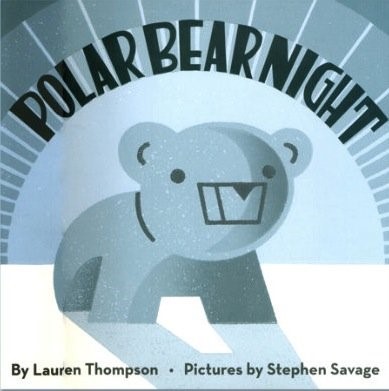 |
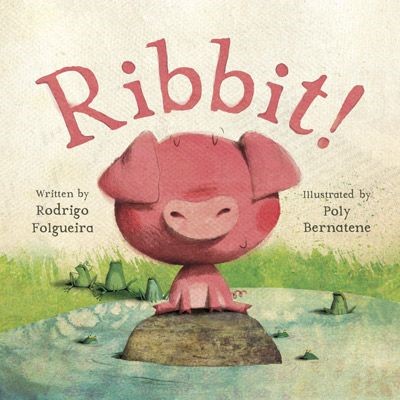 |
Ribbit! by Rodrigo Folgueira illustrated by Poly Bernatene
https://search.library.wisc.edu/catalog/9910135535902121 A pig who says “ribbit!” confounds a family of frogs when she shows up one day on the pond. Where did she come from? And why on earth is she speaking like a frog? They call on the other animals for counsel, but even the raccoon, the turtle, the duck, and the various birds can’t figure it out, until a wise old beetle offers his hypothesis.
|
| Quackers by Liz Wong
https://search.library.wisc.edu/catalog/9912160345802121 Quackers is a duck who feels like he doesn’t fit in. . . maybe because he’s a tabby cat! Writer and illustrator Liz Wong brings us to animal life in and around a farm, where Quackers resides with a family of ducks on a pond and wonders why a duck like him hates getting wet and dislikes all the dinner options! |
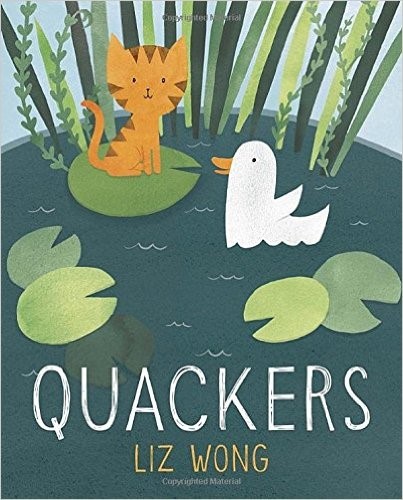 |
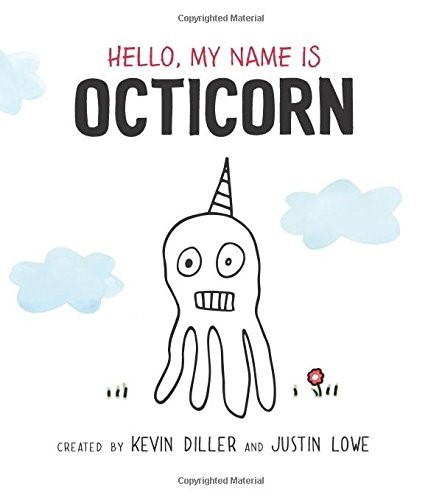 |
Hello, My Name is Octicorn by Kevin Diller and Justin Lowe
https://search.library.wisc.edu/catalog/9912201224402121 Octicorn is one of kind—half Octopus, half Unicorn. He doesn’t quite fit in on land or sea, though he offers a convincing resume of skills at both work and play to persuade the uninitiated that he could be a very good and fun friend, indeed! |
